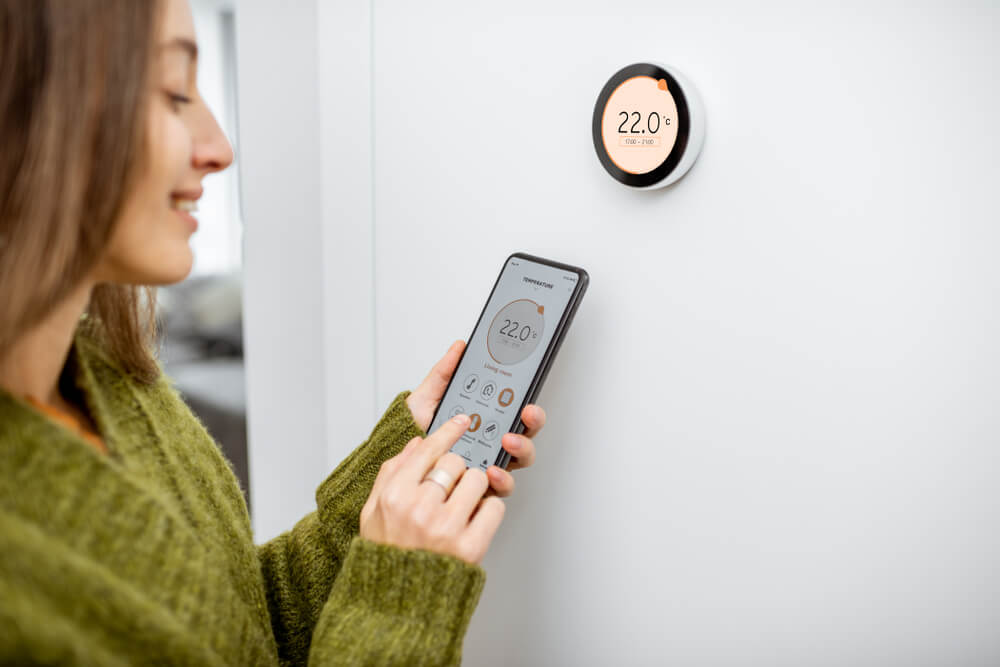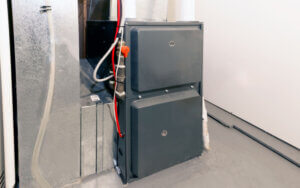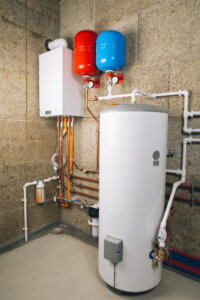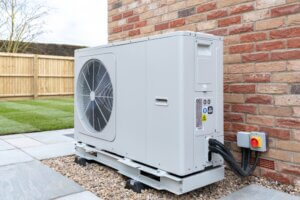Winter is just around the corner … is your home heating system up to the task? When selecting an appropriate home heating system, either for a new home or as a replacement, it helps to have a basic understanding of the different types of systems, their efficiency ratings and long-term costs (installation plus annual operating costs).
- If your existing system is over 20 years old, you may be spending a lot to keep it running – money that might better be spent on a new, more efficient system. In an existing home, it is usually cheaper to stay with the existing heat distribution system, unless you’re doing a major renovation.
- If you are buying a new home, choosing one with an efficient and well-designed heating system can payoff long-term in terms of both operating costs and comfort. Consider factors like whether you want central air conditioning before deciding on the type of heating system.
Types of Home Heating Systems
There are four basic home heating systems: Furnace, Boiler, Heat Pump and Radiant Heat. Simply put, a boiler-based system distributes heat by piping hot water or steam, while the other systems distribute warm air directly.
1) Furnace
Forced air heating is the most popular option, in which hot air from a furnace is circulated throughout the home via air ducts and registers. The ducts can also be used to filter and humidify the air and circulate it for ventilation. Having ductwork means you can also have central air conditioning or a heat pump system.
However, ductwork can transmit furnace noise and can circulate dust and odors throughout the house. Ducts can also leak, losing heated air to attics or basements where it’s not needed. With any forced air system, be sure the ducts are properly sealed to minimize leakage.
2) Boiler
Hot water (or hydronic) systems use a boiler to heat water which is circulated via copper or plastic piping, typically to baseboard radiators. Some hydronic systems circulate the hot water through pipes enclosed in the floor slab, which then radiates the heat evenly throughout the room. And some very old homes may still use upright radiators.
The advantages of hydronic systems are they provide more even temperatures throughout the home and the boiler also acts as the hot water tank for the home. However, the installed cost of hydronic systems is higher than that of forced-air systems, and they don’t provide central air conditioning, air filtering or ventilation.
3) Heat Pump
Electric (or air source) heat pumps use the same refrigerant cycle as an air conditioner, but during winter this cycle is reversed to deliver heat to the house. They are much more energy-efficient than other types of electric heat, and may have operating costs comparable to gas furnaces or even lower.
Geothermal (or ground source) heat pumps are even more efficient, because they absorb heat from the ground below the frostline, where the temperature of the ground is fairly steady year-round – relatively warmer than the air outside in winter and cooler than the air outside in summer.
A geothermal heat pump can save 30-70% on home heating and 20-50 % on home cooling costs over conventional systems according to the US Environmental Protection Agency. However, Geothermal heat pumps are much more expensive than air source heat pumps to install due to excavation and piping required. Some municipalities provide incentives to help offset the additional cost of geothermal systems.
4) Radiant Heat
Radiant heat works through the process of radiation or direct transfer of heat from a hot to a cold surface.
Electric radiant heat usually emanates from baseboards, or space heaters that are dedicated to warm up a chilly single room. It is usually more expensive and therefore much less popular than other heating systems.
Fireplaces and stoves provide another type of radiant heat. A closed system, such as a freestanding stove, is much more efficient than a fireplace. A fireplace may lose more heat than it provides because so much warm air is drawn from the room into the fireplace for combustion and must be replaced by cold outside air. On the other hand, if the fireplace has a tight-sealing glass door, a source of outside air, and a good chimney damper, it can provide useful heat.
Fireplaces can either burn real wood or natural gas with ceramic logs. While burning real wood offers a rustic aroma and crackling sounds, its drawbacks include cleaning up the ashes and the need for annual chimney inspections to reduce the risk of fire and carbon monoxide poisoning due to creosote buildup or obstructions in the chimney.
Efficiency Ratings
The higher the efficiency of the system, the less it will cost to operate. Even a small difference in annual energy costs will add up over the life of the system.
AFUE, or Annual Fuel Utilization Efficiency, is the standard efficiency rating for gas-based home heating systems, such as natural gas, propane and home fuel oil. (HSPF, or Heating Season Performance Factor, is used to measure the efficiency air source heat pumps and air conditioners.)
AFUE is the ratio of heat output of the furnace or boiler compared to the total fuel energy consumed by a furnace or boiler. An AFUE of 90% means that 90% of the energy in the fuel becomes heat for the home and the other 10% escapes up the chimney and elsewhere.
AFUE measures how efficiently your furnace can translate the fuel it burns into usable heat. But the type of fuel your furnace burns is more important in determining your operating costs than the AFUE. Once you have made your decision on what type of fuel to use, you can then use AFUE scores to compare two of the same types of furnaces or boilers and calculate how much you can save with a higher AFUE unit.
Bigger Isn’t Always Better
With any new heating system, proper sizing is important to ensure efficient operation. Some contractors may install larger systems than are really needed, either to compensate for poor distribution systems or inefficient insulation. Home heating systems are most efficient when they run for longer periods of time. An oversized system will meet the demand for heat more quickly, but may never reach its peak operating efficiency because it powers on and off frequently.
Before installing a new system, ask your contractor to calculate your heating load, which takes into account your home’s square and cubic footage, insulation levels, air tightness, window orientation and other factors that affect the amount of heat needed. Or you can calculate your heating load online for $120, even if you don’t have technical drawings of your home.
Either way, you’re now more informed about the questions you should ask prospective home heating contractors.
Need to get a quote for your next heating job? Start here to get 3 quotes quickly, and consider writing a review when you’re done, it helps the whole community!





